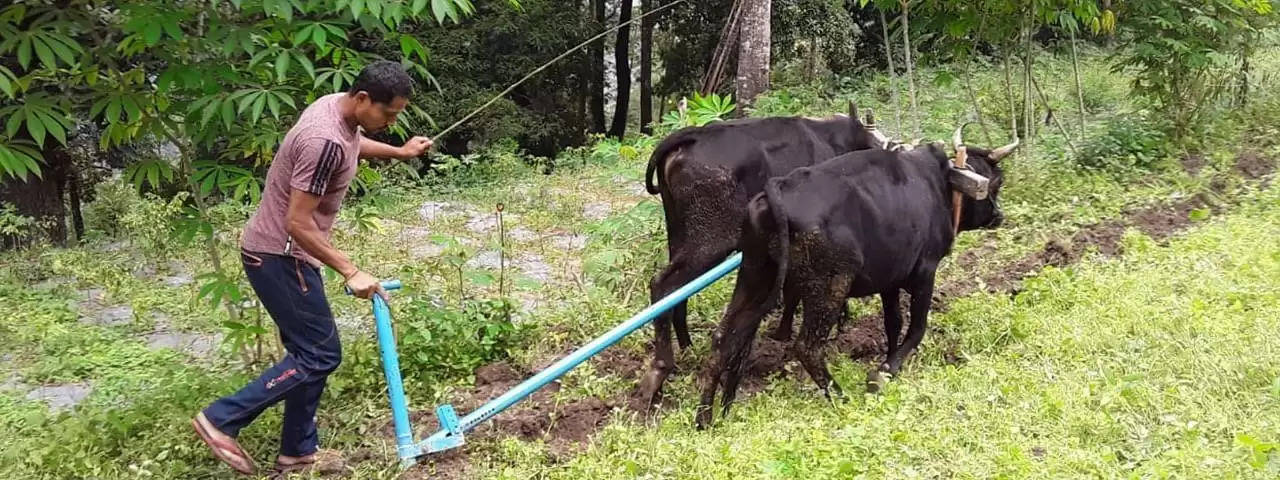Sikkim farmers complain of severe crop damage

GANGTOK
Farmers from 6th mile and Rautey-Rumtek, East Sikkim, have complained about the extensive damage to their grain, caused due to combined infection of neck blast and nodal blast on their crop.
Shri Bhim Prasad Sharma, a farmer from 6th mile, who had planted this variety of paddy on 0.4 hectares, asserted that, “the paddy plant looks like a normal ripened crop but has dried up due to problems not known in the past.”
He said that his entire efforts have gone in vain and that it will be a great loss for him in the current season, as he won't be able to harvest even a single grain in the current year.
Shri Kamal Sharma, another farmer from Rautey-Rumtek, East Sikkim, had also planted the same variety in 0.3 hectares and he too has a similar tale to narrate. After discussing with the farmers, Dr R K Avasthe, Joint Director, ICAR-NOFRI constituted a team of Scientists from ICAR-NOFRI, Tadong, comprising of Dr Chandramani Raj (Scientist-Plant Pathology) and Dr Janak Kumar Singh (Subject Matter Specialist-Plant Breeding) for the field visit.
The affected areas upon close observation of the paddy fields growing Abhishek variety recorded extensive damage due to combined infection of neck blast and nodal blast causing chaffy grains which remain unfilled.
The paddy variety is said to have come from the regional station, Hazaribagh of ICAR-National Rice Research Institute, Cuttack in 2006. However, other paddies which originated in Sikkim, like Sano Attey and Kalchanti, were free from the disease despite being planted in the near vicinity of the affected Abhishek variety.
The microscopic examination of the affected samples was conducted, by Dr Shweta Singh (Scientist –Plant Pathology) and she concluded that the paddy sheath and grains were infected, with neck and nodal blast infection which was evident due to the presence of spores of the fungi.
As a preventive measure, ICAR-NOFRI recommends the following steps :
1. Fields be sanitized and bury the infected straw and stubbles in the field.
2. Seed treatment with Pseudomonas flourescens @ 10 g/kg of seed.
3. During nursery preparation, sprinkling 2.5 kg of Pseudomonas fluorescens (talc) in stagnated water to a depth of 2.5 cm over an area of 25 m2 for one hectare of the nursery.
4. Seedlings should also be treated, by soaking the root system of seedlings for 30 minutes in Pseudomonas flourescens @ 4 ml/L before transplanting.
5. Spray three times Pseudomonas fluorescens talc formulation @ 0.5 per cent from 45 days after transplanting to grain filling stage at ten days interval.
6. Use local tolerant varieties which are convenient to Sikkim conditions and
7. In outbreak conditions, copper oxychloride, about 0.3 per cent should be applied, at intervals of 10 days till grain filling stage (< 8 kg Cu/hectare/year).

















